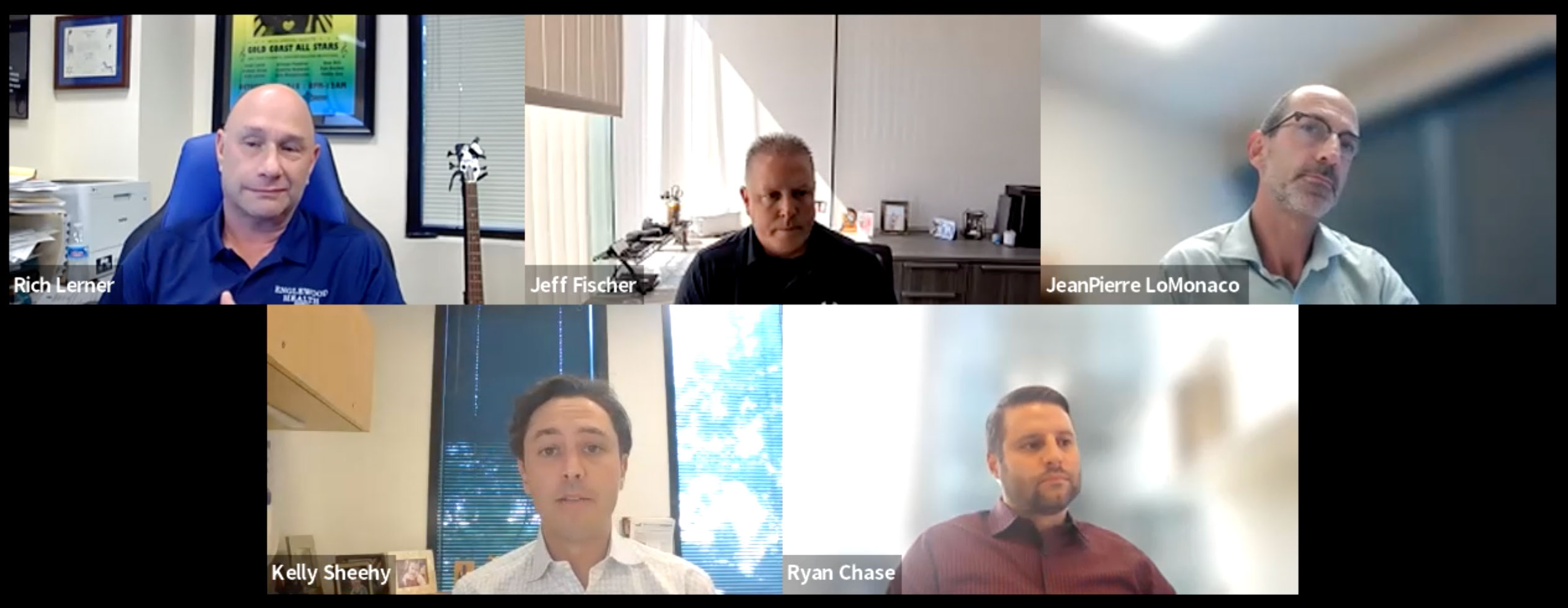For many seniors housing operators, occupancy is back to where it was before the COVID-19 pandemic struck. In addition, aggressive rent increases have resulted in elevated revenues.
However, as a result of high inflation, an extremely tight labor market and supply constraints increasing costs, profit margins have not yet returned to pre-pandemic levels.
“As an appraiser I’ve been getting all kinds of questions about what’s happening with margins and when they’ll return,” said JP LoMonaco of Valuation & Information Group. “Over the past two-and-a-half years, trying to calculate a cap rate from a sale has become increasingly more complex as in-place cash flows are less than pre-pandemic levels and less than buyer expectations. I can’t say that the economic dust has settled.”
LoMonaco made that comment during a webinar hosted by Seniors Housing Business on Sept. 22 titled “The Great Squeeze — Vanishing Seniors Housing Operating Margins.” LoMonaco moderated the panel of speakers, which also included Jeff Fischer of MBK Senior Living, Kelly Sheehy of Artemis Real Estate Partners, Rich Lerner of NewPoint Real Estate Capital and Ryan Chase of Blueprint Healthcare Real Estate Advisors. The online event drew more than 350 registrants.
Fischer and Sheehy both reported that occupancy had fallen from above 90 percent before COVID to below 80 percent during the pandemic, but those levels have returned full strength. Both also said that rents were increasing at an unprecedented clip — more than 7 percent annually.
“Our residents and their families are understanding of the higher rate increases this year,” said Fischer. “We haven’t had a lot of pushback on what we’ve been charging. The residents see the challenges we’re facing.”
But expenses have still managed to outpace that increased revenue, and labor expenses are “the 800-pound gorilla in the room,” particularly the use of expensive third-party agencies to fill shifts, according to LoMonaco.
Fischer noted that staff overtime and raw food costs were the highest expense increases that MBK has seen.
“The pain point is expenses, predominantly labor,” said Fischer. “Our profit margins have dipped to approximately half what they were pre-pandemic.
“It’s getting better little by little, but knock on wood, we think we’ve hit that bottom point and we’re chipping away at getting margin back on the uptick. We’re looking at ways to get our positions filled, get agency staffing out of the building and improve our overall margins.”
Sheehy added that Artemis is past the peak of its agency usage. “We’re in a much better spot today than we were before,” he said.
Transactions, GSE financing rebound
For their parts, Chase as a broker and Lerner as a financial intermediary, the transactions and financing fronts are looking much as they did pre-pandemic, if not better.
Chase said he has spoken to many investors that have raised between $300 million and $500 million to put into seniors housing acquisitions.
“Volatility in general creates transaction activity,” said Chase. “This year, ironically, Blueprint is going to have one of our better years in terms of number of sales and volume. I don’t think we’re alone in that. A lot of intermediaries are going to do a lot of business this year.
One trend that Chase noticed: new developments that opened during the pandemic received the same positive absorption tailwinds of the recovery as those that had been open for years. As a result, those new properties are stabilizing and selling even faster than expected.
Looking to the future, Chase said he expects REITs to become the main buyers in the near-term future. Because they often make their purchases with large amounts of cash on hand, REITs are able to avoid the negative impact of rising interest rates, he said.
On the financing front, Lerner said the government-sponsored entities — Fannie Mae, Freddie Mac and HUD — should be very active in the near term. Seniors housing is perfectly in line with Fannie and Freddie’s mission, he said, and “HUD has a tremendous appetite” for the space.
While those same interest rate increases have hampered HUD refinancing deals, it has resulted in lots of dry powder for the agency, waiting to be used.
“[Interest rate increases] have also slowed things down on the multifamily side, so the agencies have capacity to do deals.”
As a whole, lenders see the recovery of the seniors housing space and are looking to make loans here, added Lerner.
“There are a lot of deep pockets that are active. The money’s out there. It’s not as easy as it was pre-pandemic, but it’s out there.”
To view the full webinar, click here.
— Jeff Shaw

